Large-Venue Projectors: Key Features for Presentations in Big Spaces
The surging return to live events is being supported by projectors designed for concert halls, lecture halls, and more.
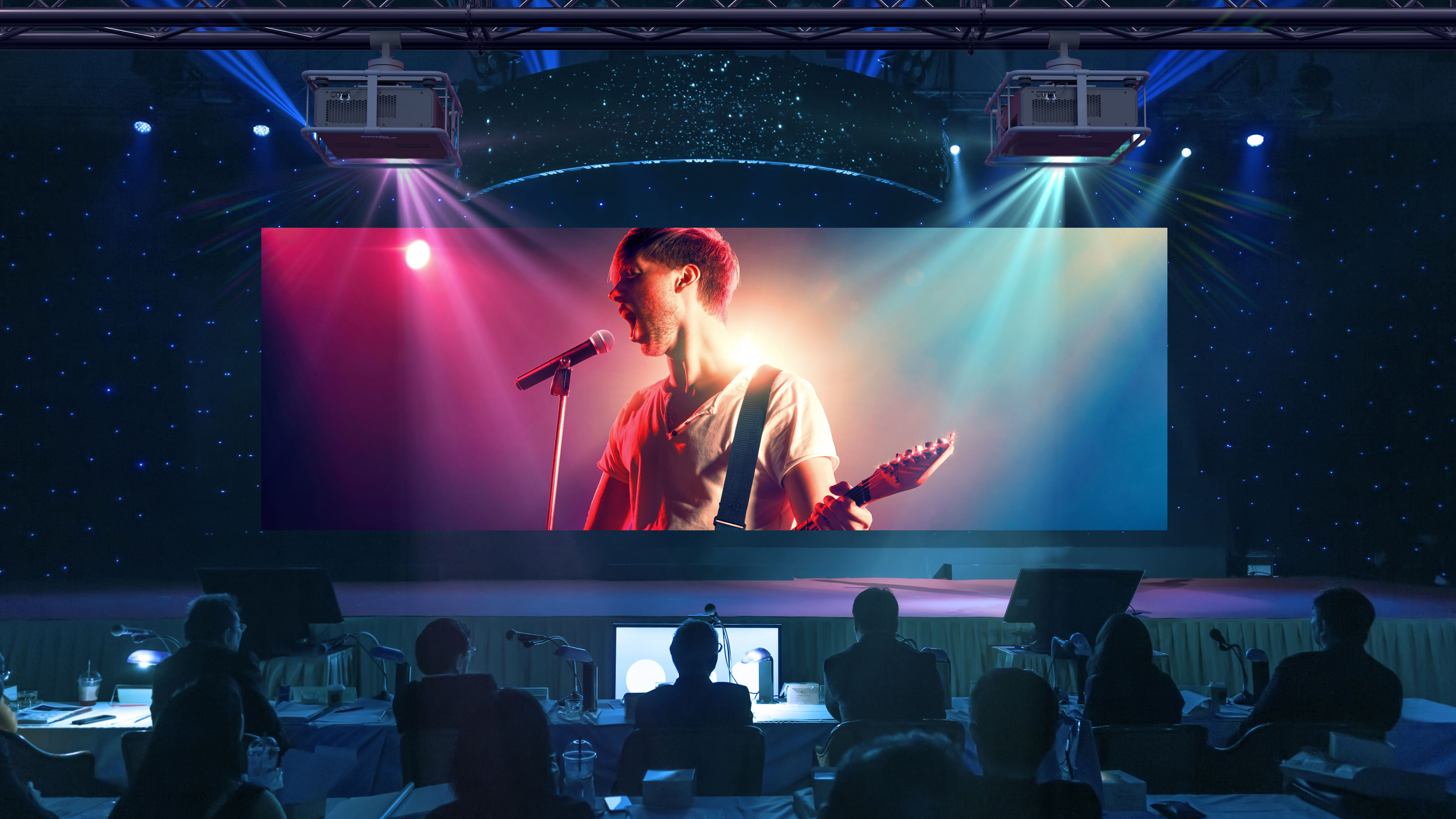
Live events, one of the verticals hit hard during the pandemic, are starting to see people come back. A lot of people. As COVID-19 restrictions continue to be lifted, guests and attendees are excited to be back in their element, whether it is a house of worship, music festival, or conference.
The resurgence in attendance at these large venues is clear. And now, integrators are looking to new, innovative ways to enhance that experience.
“Integrators and technology professionals are turning toward large-venue projectors to create engaging displays," said Ramzi Shakra, product manager, Epson America. "While this includes concerts and live events, we’re also seeing a lot of interest in theater production, corporate events and spaces, across school campuses, and tradeshows and conventions.”
“As we’ve seen with the popular 'Van Gogh: The Immersive Experience' exhibition—which has drawn in millions of global visitors—large venues, such as museums, are adopting technologies to create larger-than-life digital experiences and experiential events to attract consumers,” added Brian Soto, director of product management, Optoma Technology.
[Epson Projectors, Strand Lighting Get Visitors In the Mood]
The larger the venue, the more oomph is required from the projector. At the same time, projectors need to be nearly invisible—a quiet, unobtrusive piece of equipment that keeps the focus on the content. That’s why manufacturers continue to design more compact and lightweight projectors, creating flexibility and easier setup.
“The weight and dimension for large- venue projectors have been considerably reduced over the last decade,” explained Soto. “In the past, a 10,000-lumen projector easily weighed 50-60 pounds without a lens. Today, however, high-lumen projectors on the market weigh far less, even with a lens, and offer a much smaller footprint.”
A daily selection of features, industry news, and analysis for AV/IT professionals. Sign up below.
The Great LCD/DLP Debate
Most venues are looking for very high brightness levels that manage a diverse range of content. Over the years, one of the larger considerations in projectors, especially when looking to maintain the same quality with higher lumens, was whether to go LCD or DLP.
“Both LCD and DLP offer their advantages,” explained Sander Phipps, senior solutions engineer, Sony Electronics. “Three-chip DLPs are well suited for high-brightness applications above 20,000 lumens, while LCD offers an excellent visual performance at an economical price point for applications with lesser brightness needs.”
[How Christie RGB Projectors Brings 272,000 Lumens to Three-Story Dome]
Making the case for DLP projectors, Soto offered several advantages. “Since DLP technology is based on reflective mirrors rather than an organic material (liquid crystal display), its image quality does not degrade over time,” he explained. “DLP also minimizes the ‘screen door’ effect when producing images, whereas LCD has space between the liquid crystal pixels, so users can more readily see that spacing. Additionally, DLP technology allows a compact architecture for virtually maintenance-free designs, requiring no filters and, for laser projectors, no lamp replacements.”
Conversely, Shakra feels LCD, specifically the 3LCD technology that Epson uses, may provide more advantages. “The 3LCD three-chip architecture dedicates an entire chip to process each primary color continuously, resulting in vibrant, realistic content with true-to-life color and equal brightness," he noted. "While available on premium higher lumen projectors with three-chip technology, the majority of DLP projectors use single-chip technology that delivers color sequentially.”
So, the debate has not only shifted to consider LCD or DLP, but which chip technology is best. According to Soto, one-chip technology leverages one color wheel for color performance, so it is more affordable and compact, but others feel that three-chip technology is more advantageous in today’s market.
“One-chip projectors are, to an extent, a design compromise,” Phipps said. “They can be made smaller and less expensive, but at the sacrifice of picture quality. 3LCD offers picture quality at a one-chip cost.”
Other Features
In today’s world of entertainment and services—one which relies on dynamic visuals that try to provide immersive environments for consumers—there are more factors to look for when selecting the right projector for the job.
“Important considerations for large-venue projectors include flexibility of use—for instance, large lens shift ranges and a full set of lens options,” Phipps explained. “These allow flexibility in placement. Additionally, low maintenance designs like filter-less or self-cleaning filter systems are beneficial. Typically, large-venue projectors may not be easily accessible.”
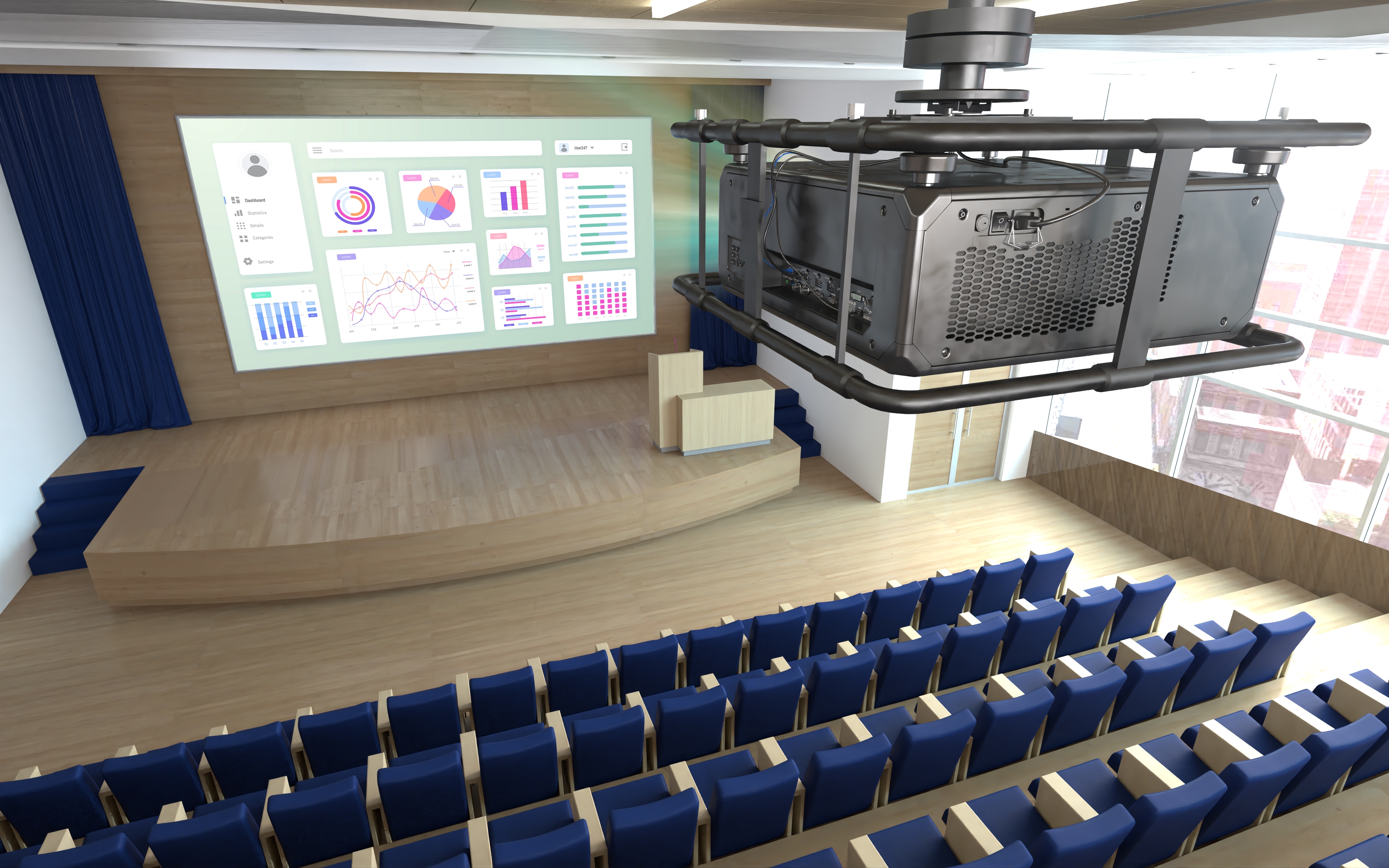
"The compatible, interchangeable lens family should cover the full range, from ultra-short-throw to long-throw with minimal gaps," Shakra added. "Ensuring compatibility and consistency across projector platforms and different chassis will help with efficiency and cost savings over the long term for end users.”
Let’s not forget about edge blending. Large, high-quality images are easier to create with dvLED displays and video walls, but the process is a little trickier with projectors. For a seamless image, multiple projectors must align perfectly to overlap in the respective regions for content, brightness, and detail.
“Edge blending technology has advanced over the years, with projector manufacturers introducing new tools and software that are built directly into a projector’s interface to help automate edge-blending and create a seamless image from multiple projectors,” Soto said. “With these new features, integrators have more control over image alignment with the help of guided displays and built-in cameras, for example, ensuring images are weaved seamlessly together with ease.”
[tvONE's CORIOmaster Adds Flexibility to University of Kent Lecture Hall]
With those advances and added control in projector technology, has edge blending become as easy as one-touch technology?
“A touch of a single button may be a bit of an oversimplification," Shakra said. "However, with advanced tools available today, we have been able to reduce the complexity and time required to create a large, blended image with multiple projectors. Epson’s automated tools take care of the alignment between the projectors’ overlapping image as well as the gradation in brightness in the blended area to ensure there is no hot spot, creating a seamless, ultra-large, and stunning display to impress audiences.”
“One key here is that the projector needs the ability to project deep blacks and have an accurate gamma response,” Phipps added. “With this, the blend zone will be very smooth and minimize the 'bright stripe' so often seen when projectors are blended.”
Lamps or Laser?
Simply put, projectors, especially for larger venues, have changed. There are more use cases and higher lumens needed than ever before. Chances are that large-venue projectors are being used more frequently and longer during performances or events.
Which makes the lamp projector a dying breed.
“Laser projectors are preferred for numerous reasons, including the ability to lower your overall total cost of ownership,” Phipps explained. “With laser projection, there’s no costly, inconvenient, or dangerous lamps to replace, as laser systems usually run much cooler. They also provide a light source that allows the projector imager to last longer. And, with instant on/off features, users no longer wait for lamps to warm up or cool off. Time is money.”
[Projector Software Makes a Difference in Themed Environments]
“There is no denying that laser technology in projectors is on the rise,” Shakra agreed. “When choosing lamp or laser, there isn't a specific feature set to look for per se—it really depends on the application of the projector. Pending the exact application and setting for the projectors, a few things worth looking for are brightness level, size, weight, and fan noise.”
With so many different venue and performance types, the following list provides several models to consider.
Barco G100-W22

Barco’s single-chip DLP laser projector offers WUXGA (1920x1200) resolution and 22,000 lumens of brightness for up to 20,000 hours. Inputs include HDMI 2.0, DisplayPort, DVI-D, HDBaseT, 3G-SDI, and VGA. The 3D version (G100-W22 3D) supports active and passive 3D. The 119-pound projector works with Barco’s Projector Toolset software for easy setup via computer. The software also supports blending and warping capabilities. An extensive GC-lens range allows the flexibility to shoot from long or short distances and to play with 360-degree orientation possibilities.
BenQ LU9800

The 10,000-ANSI-lumen LU9800 BlueCore laser projector offers native WUXGA resolution and delivers 95% Rec. 709 color coverage and accuracy. With its flexible design and multiple lens options, dynamic installation options include 360-degree rotation and projection onto ceiling, walls, floors, or angled signage. In addition, motorized zoom, focus, horizontal/vertical lens shift, and customizable memory features ensure the image is perfectly aligned to the room’s requirements. The 59-pound projector offers a variety of I/O interfaces, and its fully enclosed laser engine is IP5X-certified for maintenance-free operation. The LU9800 is also preinstalled with BenQ’s MDA centralized control software for remote monitoring, configuring, and control of individual or multiple projectors.
Christie M 4K25 RGB
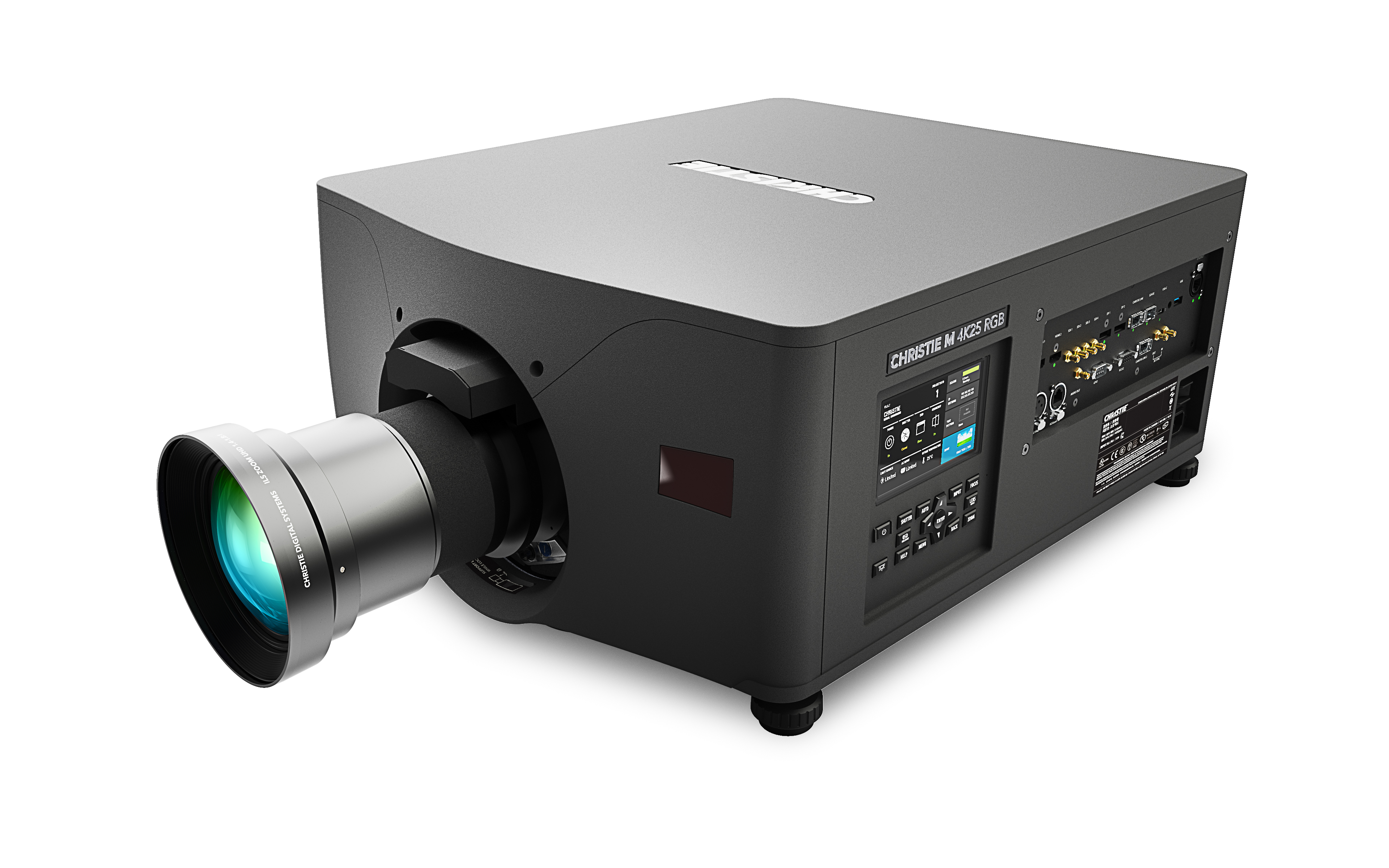
The Christie M 4K25 RGB pure laser projector with dust sealed 3DLP laser optical system re-imagines the rugged and reliable M Series with RGB pure laser technology, UHD 4K resolution with precision pixel shift (native 1920x1080), electronic color convergence (ECC), and an intelligent lens system (ILS1) that’s compatible with legacy M, J, and Crimson Series projector lenses. With 25,000 lumens, a 46 dBA sound level, and Rec.2020 color performance, the M 4K25 RGB features double the brightness, double the color volume, and quadruple the resolution over Christie’s legacy M Series projector. The 92-pound projector offers extensive inputs, including 12G-SDI, HDMI, DisplayPort, HDBaseT, 3D sync, and fiber (for use with the optional Christie Link Transmitter).
Digital Projection Satellite

Digital Projection has created a modular laser projection system. The Satellite HIGHlite Head supports native WUXGA resolution and up to 20,000 lumens. The 42-pound head is compact and lightweight with sealed optics, so it is nearly maintenance free. The 3 RU modular light source (MLS) and 4 RU satellite control module (SCM) are rack mountable and connected to the head by a satellite link cable, which is available in various lengths. Combine up to two modular light sources—or share one source to multiple heads. The 3-DLP system supports up to 120 frames per second via DisplayPort or HDMI input, with other connectivity options included. Four lens options are available.
Epson EB-PU2220B
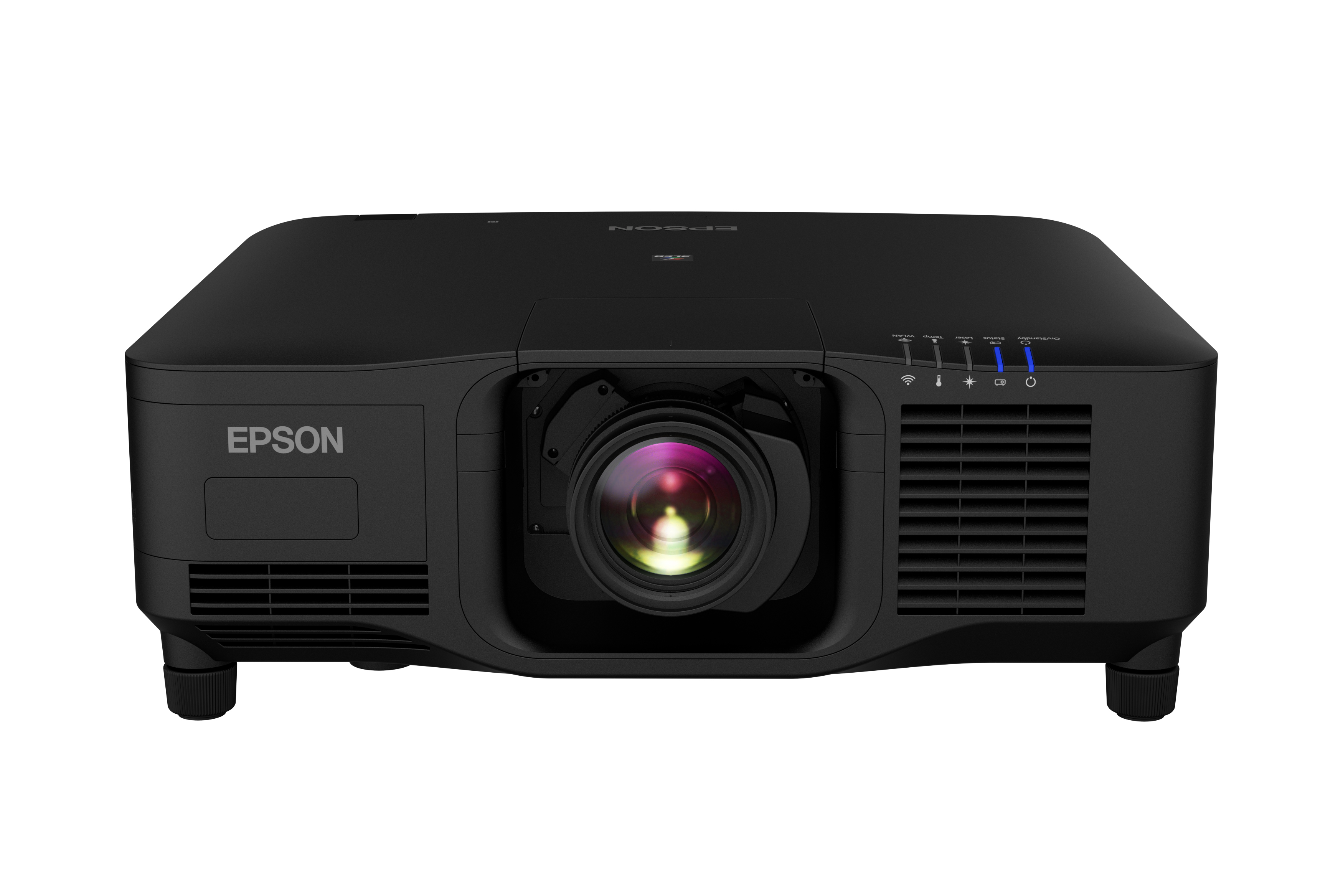
Housed in a sleek, black cabinet, the 20,000-hour EB-PU2220B laser projector is optimized for live events with 3G-SDI I/O to accommodate daisy-chaining and long cable runs, plus a mechanical shutter to protect the projector during laser light shows. The 3LCD, 20,000-lumen projector delivers WUXGA resolution and weighs about 54 pounds. It also features a hermetically sealed optical engine for high dust resistance and a filter-less cabinet for low-maintenance operation. Other interfaces include HDMI, HDBaseT, DVI-D, VGA, USB, RS-232C, and RJ45. The EB-PU2220B pairs with nine optional powered lenses, and the optional PixAlign camera streamlines multi-projector setups.
Optoma ZU2200

As part of Optoma’s DuraCore laser lineup, Ultra Bright Series WUXGA projectors feature 4K HDR compatibility, pure engine video processing, color matching, and passive 3D compatibility. The 22,000-lumen ZU2200 delivers up to 30,000 hours of laser lifetime, with an IP5X rating for dependable performance even under extreme conditions. Eight interchangeable lenses are available for the 119-pound DLP projector. Visual Suite software and an integrated camera create seamless setups with automatic image adjustments, warping, and calibration for consistently bright and uniform images while reducing installation hours. Connectivity includes HDBaseT, DisplayPort, HDMI, VGA, DVI-D, RS-232, and 3G-SDI, with RJ-45 and USB-A control options.
Panasonic PT-RQ25K
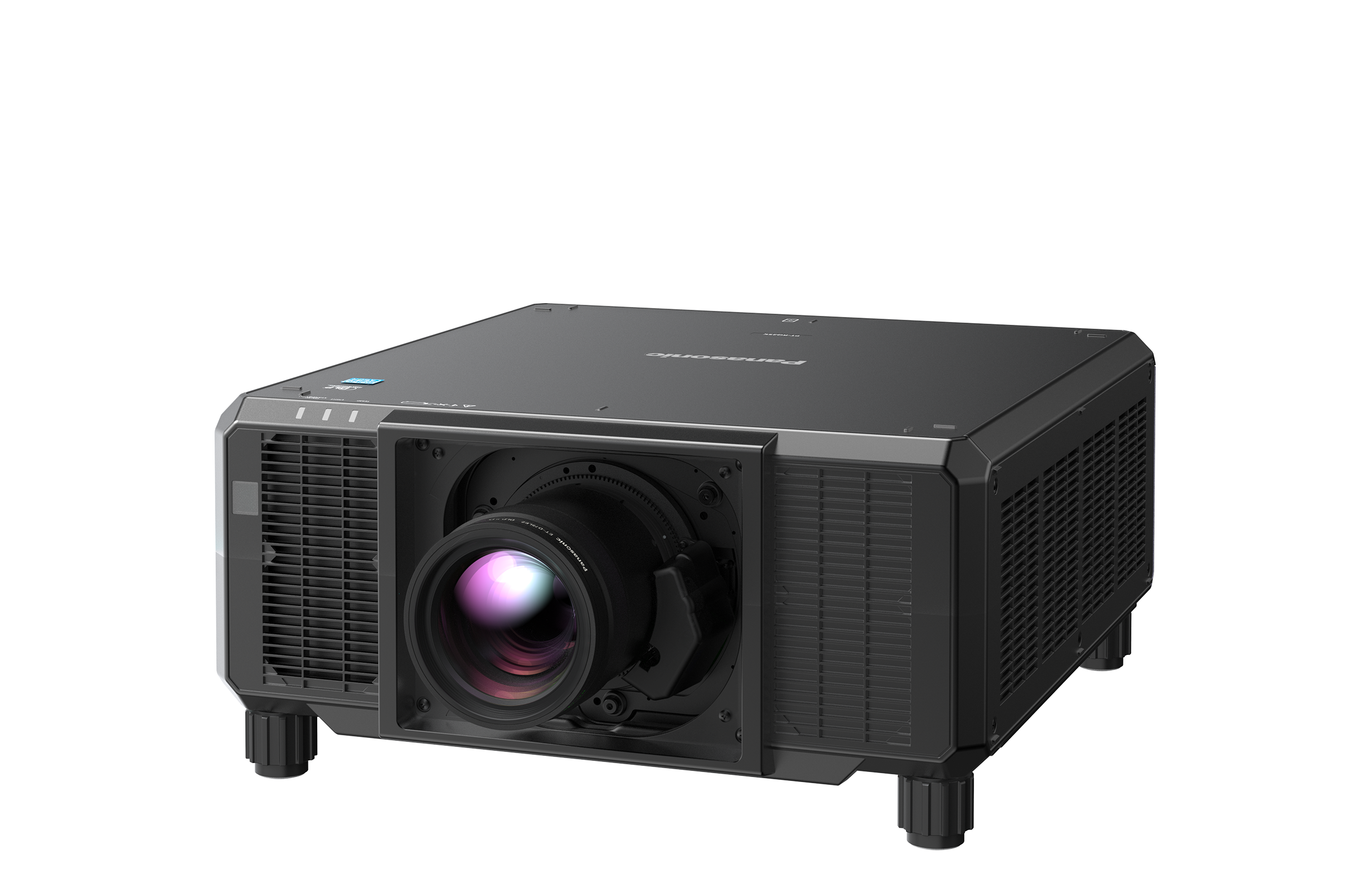
A 3-DLP 4K laser projector, the PT-RQ25K weighs about 77 pounds and delivers 20,000 lumens. The projector is significantly smaller and lighter than the previous PT-RQ22K model. Its Quad Pixel Drive, a two-axis pixel-quadrupling technology, creates smooth 4K images. An Intel SDM-ready slot integrates preferred terminals with optional proprietary or third-party interface boards, but the PT-RQ25K also features HDMI and DisplayPort inputs, plus multi-projector sync (including 3D), RS-232, and RJ45 interfaces. Its hermetically sealed optical block is cooled by a high-efficiency, liquid-cooling system that enables maintenance-free projection for 20,000 hours.
Sharp NEC PX2201UL
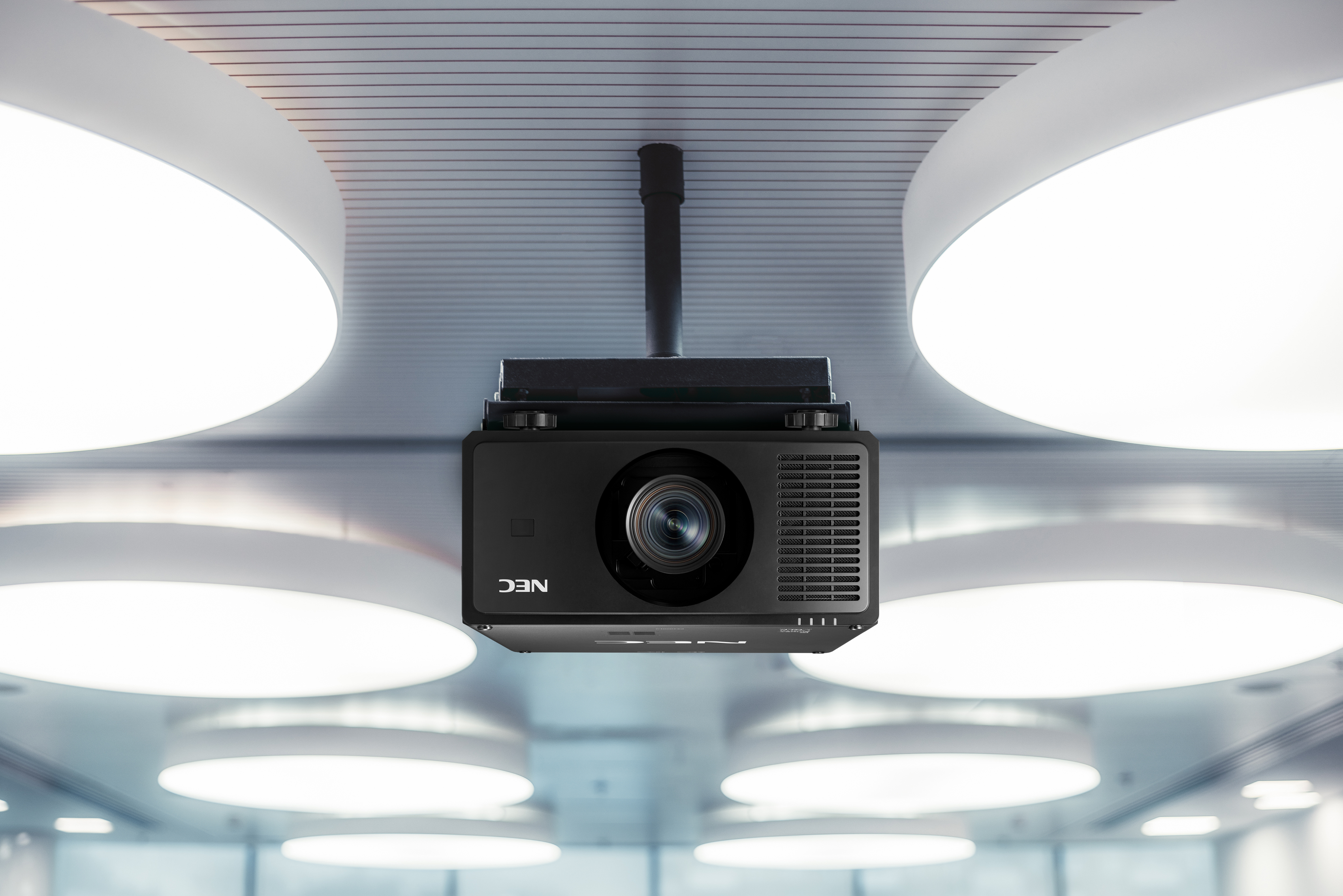
Launched in April, the PX2201UL 1-DLP projector offers WUXGA resolution and 21,500 lumens, with a 20,000-hour, virtually maintenance free laser light module. A variety of motorized lens options provide throw distances from 3.3-137 feet. Tilt-free installation make the PX2201UL ideal for almost any install environment, and the +50%/-10% vertical lens shift and +/-30% horizontal lens shift capabilities make alignment easy. Inputs include HDMI, DisplayPort, VGA, DVI-D, HDBaseT, and 3G-SDI. Other features for the 112-pound projector include edge blending, 3D support, and geometric correction for projection on spheres, corner angles, and other non-standard surfaces.
Sony VPL-FHZ85

Sony’s compact, 29-pound WUXGA 3LCD laser projector, the VPL-FHZ85, supports 4K60 input and combines brightness with efficiency, installation flexibility, and advanced operational capabilities. Designed for mid-sized corporate, education, worship, and e-sports environments, it delivers 7,300 lumens (8,000 lumens at center) and delivers rich imagery in demanding lighting conditions. It incorporates Sony’s Reality Creation real-time signal processing, mapping, and analysis technology, which results in crisp and clear pictures and text for effective presentation and display. The Reality Text feature improves text-based presentation materials by providing clearer letters and lines with enhanced legibility. Input connectivity includes DVI, HDMI, HDBaseT, BNC, and RGB. A variety of lenses are available.

Wayne Cavadi is the senior content manager of Systems Contractor News. Prior to taking a leap into the Pro AV industry, Wayne was a journalist and content lead for Turner Sports, covering the NCAA, PGA, and Major and Minor League Baseball. His work has been featured in a variety of national publications including Bleacher Report, Lindy's Magazine, MLB.com and The Advocate. When not writing, he hosts the DII Nation Podcast, committed to furthering the stories and careers of NCAA Division II student-athletes. Follow his work on Twitter at @WayneCavadi_2 or the SCN mag Twitter page.
